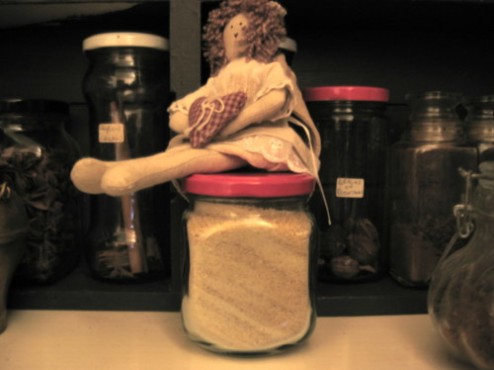A Jar of This, a Jar of That…
…and patience. Throughout life it can reward one with many wonderful things: a good harvest from the tender care of plants… bright, kind and thoughtful children… a materialization of a well-planned design…great talent and skill nudged forth by an undying interest….a post on a blog…
…and pickles. Yes.
Over the last few months, I’ve been more-than-hinting to a few of you what I’ve been up to. The thing is: the more research and “clinical studies” I did, the more recipes I stumbled across- some of which totally made me re-write any rules I had by then formulated in my head, and I found that the subject of Desi pickles couldn’t be so easily-contained within a single post. I also found that I knew much less- next to nothing- about them, despite my great curiosity and passion for them.
Seemingly, within the borders of its myriad cuisines, India sports an absolutely bewildering array of preserves, and uses every method known to humankind to achieve the end of food immortality. At first I concluded that some of these methods were peculiar to India, but in my unquenchable, tongue-driven quest for ever-new sour-saltiness, I made brief sojourns (forced, of course) into the documents of other lands’ cuisines, and found kinship there. I became keenly aware that the allegorical pickle jar of the world is very large indeed, but salt and sour seem to be the ties that bind- to keep things safe from the harms of time. The jars are just silent hands.
But how grand!
Autumn Me This!
Well folks, the killing frost that ends the growing season in the Green Bay area will come this night- near dawn (November 9th); last year, it was October 27th/28th- 12 days later this year… My hibiscus, lime sapling and bay laurel have been brought indoors and placed in a sunny window; they seem happy: red blossoms are appearing on the hibiscus now, and, two days later, falling. Last week the corms of my little taro family were gently pulled from the cooling soil and placed in the basement to hibernate. There is a chance of snow tonight, but such early snowfalls tend not to linger on the ground long, and the last trees to show their colours- like these maples lining the street- are in their transient glory…
Such is autumn! Isn’t the mould of oak-leaves at the top pretty?! Though some become sad to see the greens of summer fade, I am, in fact, quite content. In a grand effort this past season, I attempted to “eat local” as much as possible, which meant that much of the summer’s bounty fetched from the farmers’ markets- or the few things that I’d grown myself- was in need of preserving for the coming winter and spring. And I totally avoided using the freezer! Instead, I turned to home-canning for some things (tomatoes and a few “immersed” pickles; I detest canned vegetables for those interested), drying, and spent the remainder of my efforts on what some may call “ambient” preserves: those that will keep at room temperature without a vacuum seal. Which translates into my tapping into the very knowledgeable database of Indian pickling. If I was astounded a year ago at the variety, I am now nothing short of flabbergasted- and that might be a gross understatement.
And I’m very very tired.
But I’m not done yet: I cannot count how many limes I’ve squeezed- and thus had many, many peels that I couldn’t bear to toss away (good antioxidants you know!)- and so… I froze them until the bags became a nuisance and made large batches of yet more pickles by combining the lime peels with a juicier citrus- like oranges. And one last slew of them remains to be dealt with! Plus a bag of frozen amla… but they can both wait until I catch up on a few more things. (Chana ka achaar? Leave me be- maybe later)
One of those things is a chain of riddling that our sweet friend Manisha started. I was lucky enough to guess the correct answer of her name-the-subject-of-this-photo riddle, and the prize is that I now pass another riddle to all of you! Aren’t you lucky?! 😀
Anita was lucky too! Aren’t we a brilliant bunch… 😉
The rules of supplying the correct answer to Riddle Me This (ie: winning) are simple and few: [coughs]
- find something stranger than strange and,
- post it on your blog within the next two weeks (or so…).
- The quiz should remain open for at least 1 day and at the most 2 days.
- The person who guesses it correctly gets the torch and is the next host for Riddle Me This.
- If the person who guesses correctly is the previous host of the present host, then that person will get to pick someone to pass the buck to from all those who made a guess.
- And so on.
- Please use this fabulous logo, designed by you-know-who:
- and link back to the host who passed the baton on to you (that’d be me!).
- Please do your best to keep this alive. Just think of how much fun it will be! (It’s possible.) 🙂

Can any of you correctly identify these?
This episode of Riddle Me This (RMT) has now concluded; Anita of A Mad Tea Party has taken the trophy home once again by correctly identifying these as hickory nuts. Hopefully someday Manisha herself will be able to conquer the monster she herself has created. Good luck! Peace and Happiness to all, and to all a good night.
Gargle
Rows, rows and rows-
Jars empty fill shelves:
Little ghosts in a classroom-
Not one spoils the silence.
With dust-lipped, open mouths-
Parched, they wait breathless;
Crumpled spiders to swallow whole.
The lucky ones munch dried leaves-
Toothlessly torn from a chill gust:
Tea and gossip-
With a wind that whispered, and then went away.
-P. Qeluzsva
Make Whey…and Use It Too!
Little Miss Muffet sat on a tuffet, eating her curds and whey;
Along came a spider, who sat down beside her,
And frightened Miss Muffet away.
Perhaps you have heard of this little childhood rhyme, and perhaps, like me at the ripe old age of three, you had no idea what sort of food “curds and whey” was. I recall asking one of my grammar-school teachers. Her reply? Cottage cheese… And ever since then I’ve felt compelled to check the air around me for dangling arachnids as I devour a bowlful. But, there is evidence that the dish referred to in the rhyme is the English sweet known as junket. Either way, milk is curdled. Curds, and whey…
Perhaps, like me, you are well-aware that there are many other curdled things made by adding a souring agent to milk or cream. Yoghurt, sour cream, kefir (the production of all three of these demand that edible bacterial cultures be introduced which devour lactose, producing an acid which forms curds) and all cheeses (made by compressing these curds or those formed by introducing an acid directly) would be impossible without this initial phase of “curds and whey”.
Perhaps, like me, you have decided to be a bit more self-reliant by producing some of these food-stuffs at home and wonder, when all is said and done, what to do with all of the leftover whey. Well, for one, it can be added to the sauce or gravy of many dishes. In the Punju dish mattar panir, for instance, it is often added to the tomato-laden gravy where it adds a subtle, sweet-sour sparkle. It can be used to thin saucy legume dishes during the final simmering (adding any acidic substance at an earlier stage of cooking inhibits the softening of legumes); certainly it can be added in small amounts to many soups. It is, after all, protein-rich, and often used as a nutrition-boosting additive in many pre-packaged foods.
But perhaps, like me, after a session of panir-making or yoghurt-straining, you have no immediate way of using all of this whey that sits there so pale, so golden, so lovely in a container on your counter-top. You hate to discard it, so you freeze it, thinking that you will find ways of using it in the near future. And then, over time, you realize that you have so many containers that are taking up so much room… but it’s too much of a shame to just let them all thaw to pour down the drain. Sacrilege, you think. You arrive at a cerebral sticking-point.
And then, maybe, a thought strikes you. You could save space, save energy and dehydrate it…
And, truly, it isn’t very difficult to turn all of that whey into a concentrated powder. Whey powder, to use at whim without thawing, to keep in a handy place in the kitchen, to add to gravies, soups, stews, sweet drinks, almost anything. And here is how to do that:
1)Take your saved quantity of whey and bring it to a boil, lower the heat a bit to maintain a gentle boil, and stir it occasionally as it reduces.
2)It will eventually become a thick, caramel-coloured goop, so be sure to stir more frequently as it nears this stage. I threw in a quick handful of salt while it was reducing; perhaps this is unnecessary, but by doing this I felt reassured that the resultant powder would be spoil-proof. When it is rather thick and deep-golden in colour, remove it from the heat and pour this onto a waxed-paper or parchment-paper-lined baking tray. Allow to cool and set.
3)I then broke this candy-like slab roughly into pieces about 1″-2″ wide, and allowed it to dry thoroughly for a few weeks. I forgot about these pieces for some time actually. The edges and surface of these pieces will become pale as it dries.
4)I then took these hard pieces, gently smashed them in a mortar-and-pestle, and then sifted the powder from this. The larger “pebbles” that remained in the sieve I then placed in an electric grinder and pulverised, then poured through the sieve. You could, instead, continue the pulverising in the mortar-and-pestle if you wish. The resultant near-fine powder I poured into a jar and screwed on the cap. Whey powder dissolves in water, so a good soaking makes the cleaning of any utensils used simple enough, and what was once many quarts now fits within my hands. Much easier to use now, perhaps…
[Miss Muffet illustration at introduction by William Wallace Denslow. Public domain, and used freely with that knowledge here]







